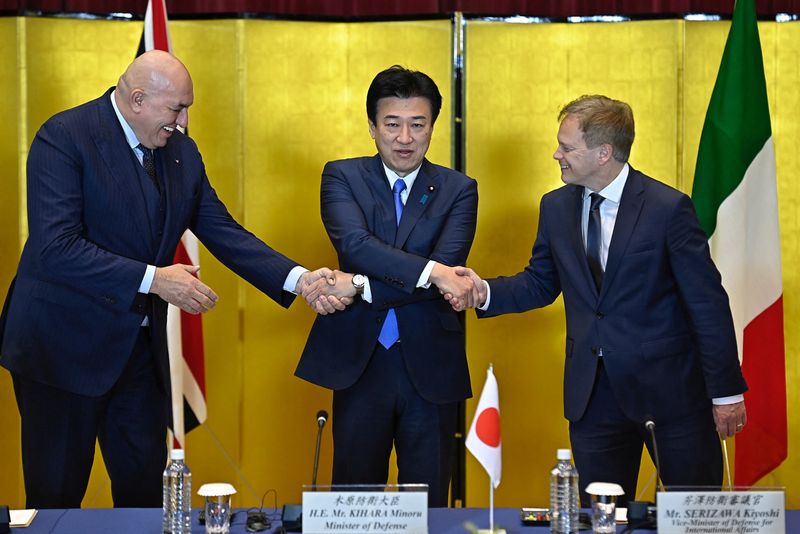LONDON/TOKYO/ROME (Reuters) -Britain, Japan and Italy have signed an international treaty to establish a programme aimed at developing an advanced fighter jet, the defence ministers of the three allies announced on Thursday.
The agreement, which Reuters reported this month, comes a year after the three countries established their first major defence industry collaboration by merging the separate next-generation fighter efforts of London and Tokyo.
The parliaments of each country must ratify the agreement, which aims to see the combat aircraft in flight by 2035. The joint development phase of the programme will begin in 2025.
Both the joint government headquarters of the Global Combat Air Programme (GCAP) and its industry counterpart will be based in Britain. The government organisation's first chief executive will come from Japan, while the first leader of the business organisation will be from Italy, according to the announcement.
"No nation can do this alone to this level of expertise combined with our skills and our equipment, with our design and ability on production lines," British defence minister Grant Shapps said.
Flanked by Shapps and Italian Defence Minister Guido Crosetto in Tokyo, Japan's defence minister, Minoru Kihara said: "As we face the most complex security environment since World War Two... securing aerial superiority continues to be a crucial challenge that we must achieve."
Kihara did not say who would head the company, but said that he would ensure "the best person for the job" is selected.
Italy, Britain and Japan will all have equal 33% stakes in the project, the Italian Defence Ministry said in a statement.
"Months of negotiations have allowed for a balanced compromise," it said.
In the past months, Italy had dismissed as "speculative" reports that Japan and Britain would dominate the alliance.
The supersonic stealth jet will feature a radar that can provide 10,000 times more data than current systems, the British government has said.

Britain's BAE Systems (LON:BAES), Italy's Leonardo, European missile maker MBDA and engine maker Rolls-Royce (LON:RR) are involved in the project.
Reuters has reported that Japan's Mitsubishi Heavy Industries, Japanese avionics manufacturer Mitsubishi Electric Corp, and engine makers IHI Corp and Avio Aero are also involved.